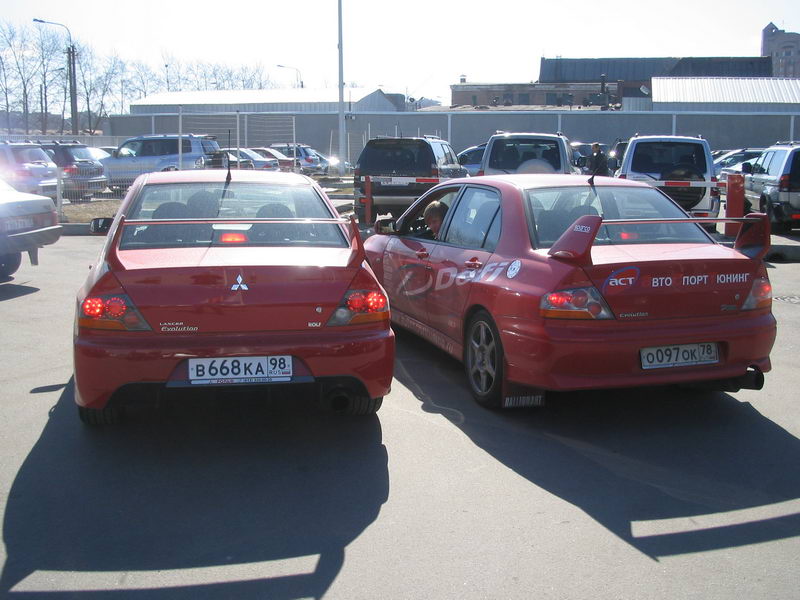The world of motorsport has always been about evolution—a relentless pursuit of perfection where power, control, and aesthetic allure collide in spectacular fashion. When it comes to rally cars, few names resonate with as much fervor as the Mitsubishi Lancer Evolution series. Among its proud lineage, two models stand out, embodying both heritage and innovation: the Evo 8 and Evo 9. Each iteration holds a distinct identity, yet they share a common goal: dominating the rally stage. So, which of these mechanical marvels truly deserves the title of the ultimate rally car?
Before we delve into the specifics, let’s set the stage. The Mitsubishi Lancer Evolution series began its journey in the early 90s, capturing the hearts of car enthusiasts and rally aficionados alike. Designed primarily for competitive rallying, each iteration boasts a rich tapestry of engineering prowess, athleticism, and raw emotion. The Evo 8 emerged in 2003, stirring excitement with its robust presence and exceptional performance. Just a few years later, the Evo 9 hit the market in 2005, upgrading its predecessor with both subtle and significant enhancements.
To commence our examination, let’s explore the powertrains that define these two formidable contenders. The Evo 8 is equipped with a turbocharged 2.0-liter inline-four engine, often referred to as a 4G63. It churns out a formidable 271 horsepower and 274 lb-ft of torque. What makes the Evo 8 a trailblazer in performance is not just its power, but how ingeniously it directs that power to all four wheels. The All-Wheel Drive (AWD) system, combined with Mitsubishi’s Active Center Differential, provides unparalleled grip and control regardless of terrain.
Meanwhile, the Evo 9 takes a bold leap forward with modifications that elevate the driving experience. Sporting a refined 2.0-liter turbocharged engine, the 4G63 engine is reworked to produce similar power, but with increased reliability and responsiveness. With an emphasis on improving aerodynamics, the Evo 9 features a more aggressive rear wing and front bumper, enhancing downforce and stability. One could argue that the subtle upgrades refine the driving experience, enabling drivers to harness their inner rally champion.
Shifting gears, let’s look at the suspension systems. The Evo 8 is known for its dynamic handling, featuring a MacPherson strut setup in the front and a multi-link arrangement in the rear. This configuration ensures balanced handling, allowing enthusiasts to corner with confidence. However, the Evo 9 introduces a more sophisticated suspension system, incorporating enhancements that improve ride quality and response. Notably, the Bilstein dampers improve stability and elevate the car’s prowess on uneven terrain—a crucial element for any rally competitor.
The interior layout also merits discussion. The Evo 8’s cabin is functionally designed, prioritizing driver ergonomics with supportive sport seats and a logical instrumentation cluster. While the interior may not exude luxury, it radiates a purposeful simplicity that appeals to drivers focused on performance. The Evo 9, however, brings a level of refinement that can’t be ignored. With features like a more intuitive infotainment system and improved materials, it blurs the lines between practicality and luxury. Can a rally car possess the creature comforts of a luxury sedan while remaining a pure-bred racer?
Now, let’s entertain the driving experience. The Evo 8 is often touted as the raw, unfiltered experience—a car that connects you to the pavement in exhilarating ways. Its mechanical symphony and precise steering create a sense of immediacy that is addictive. Drivers revel in the tactile feedback, knowing they are part of a machine that lives and breathes performance.
On the other hand, the Evo 9 introduces a level of sophistication without diluting the core experience. Its power delivery feels crisp, and the overall dynamics are characterized by an invigorating blend of comfort and excitement. Many enthusiasts point out that the Evo 9 caters to a broader audience, encapsulating the wild spirit of its predecessor while polishing the driving mechanics to be more accessible. So, does this make it the superior model, or does the charm of unfiltered rawness in the Evo 8 steal the show?
While performance metrics, power outputs, and engineering specifications are essential, let’s not overlook the emotional connection that drivers forge with their vehicles. The Evo 8 has attained legendary status; its unyielding tenacity and capabilities cement it in the hearts of many. Conversely, the Evo 9 charms a new generation of enthusiasts, bringing modern sensibilities to an iconic lineage. It poses an intriguing challenge: as innovations in automotive technology become more advanced, how do we preserve the soul of motorsport heritage?
In the end, choosing between the Evo 8 and the Evo 9 may often boil down to personal preference. The Evo 8 stands as a tribute to unrestrained performance, an exhilarating embodiment of rally history. The Evo 9, meanwhile, emerges as the intelligent evolution, merging heritage with advanced technology in an exquisite dance. So, dear reader, which model captures your rally car fantasies? Will you embrace the raw fervor of the Evo 8, or are you drawn to the sophisticated innovation housed within the Evo 9? The debate will likely continue, fueling conversations among enthusiasts for years to come. In this exhilarating world of evolution, one thing is certain: the spirit of the Lancer Evolution lives on, prompting each driver to define their own ultimate rally car experience.
